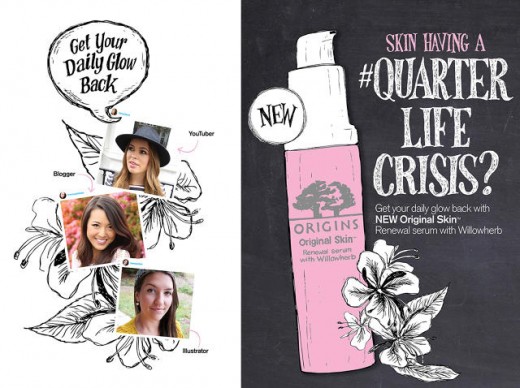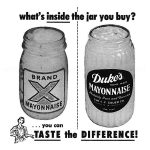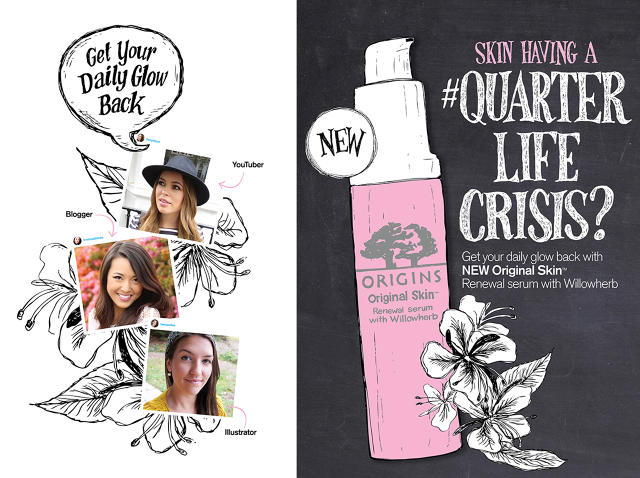What Origins discovered When It Went After The Millennial Market
lessons in advertising face cream to women too younger for wrinkles, however seeking a pure glow.
April 14, 2015
these days’s twentysomethings find themselves in an in-between position: they’re out working on the earth, however not like previous generations, they’re now not yet considered full-fledged adults. Most don’t have the assumed perks of maturity, like a steady paycheck, a spot of their very own, or a existence companion. And yet, they really feel the primary pointers of age catching up to them—unexpectedly, it is more difficult to shed pounds, shake hangovers, soar back from all-nighters. Many report feeling like their skin is moderately literally losing its youthful glow.
The above findings come from the skincare company Origins, which spent two years interviewing lots of of millennials, trying to see the sector from their perspective. Origins already has a robust following amongst ladies in their 30s and 40s, nevertheless it wanted to make inroads with millennials, an 80-million-robust demographic that spends $1 trillion a year. “We needed to look what would resonate with a 25-yr-previous lady, in view that we are looking to her as our subsequent consumer,” says Rachel Martino, assistant manager of world social media at Origins, and a 24-year-old herself. “We wished to capture her at a time in her lifestyles when we could in reality speak to her and draw her into the emblem.”

however looking to goal a new market is no small feat; it requires investing in research to supply new products, advertising and marketing campaigns, and even new model design. Origins’s management believed that the easiest way to gather this knowledge used to be via co-creation, a buzzword well-liked in management circles, which means that bringing consumers into every stage of the trade process. the idea is not just to create products for a selected roughly client, however with that shopper. So Origins set up workshops in the U.S. and China, inviting a whole bunch of twentysomethings to discuss their existence, dreams, desires, and wishes—and no longer simply as they relate to skin care.
“In a conventional focal point group, you have already got a product or a campaign you’re testing with your target demographic,” Yann Marois, govt director of worldwide market at Origins, tells fast firm. “Co-introduction is the opposite: you’re going into the room with nothing. You’re ranging from scratch.” the idea is that co-introduction means that you can discover totally new insights, reasonably than merely gathering feedback about your present ideas. this sort of in-depth knowledge gathering comes at a steep cost. whereas Marois didn’t supply a precise determine, he mentioned that Origins spent extra on these co-creation efforts than it had spent on any previous shopper-perception analysis.
solving actual—no longer Assumed—issues
Origins determined co-introduction was once well worth the substantial funding as a result of it might yield a groundbreaking perception or two. And ultimately, a gem of an idea did emerge. The Origins team stored listening to twentysomethings lament the loss in their pores and skin’s radiance; this used to be a problem the logo felt it had the power to tackle. “over and over, in co-advent workshops, they described organic modifications that had been happening of their pores and skin,” Marois says. “but they didn’t comprehend exactly what used to be going on or describe it. They shared this sense that their skin used to bounce back a number of years ago, however now, after lengthy hours, it was once not getting better.”
Origins’ scientists set out to take note the biological approaches that result in these delicate skin changes. They identified a course of referred to as carbonylation, which motives the pores and skin to look duller because it a while. “we now have analysis displaying that skin is in transition within the decade of our twenties,” Wendy Brooks, director of worldwide product building at Origins, explains. “pores and skin loses its translucency; this literally means that much less gentle is ready to mirror via skin and again out of it, resulting in an total loss of glow.”
Brooks and her crew tried to seek out methods to reverse this process. They invented a serum referred to as unique skin, which contains Willowherb, a plant extract that Origins believes has the power to revive the pores and skin’s radiance. The product also ambitions other considerations that emerged from workshops, comparable to enlarged pores, roughness, and dullness. “This was a new means for us,” Marois says. “speaking right away to millennials allowed us to create a product that met real considerations—not simply assumed concerns.”
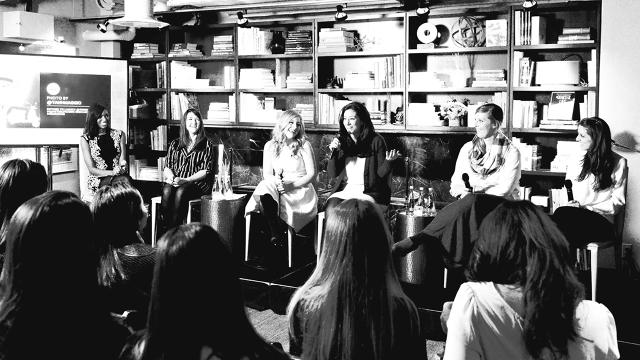
talking Their Language
however creating the precise product is only one part of co-creating. It was additionally necessary for Origins to analyze to talk millennials’ language and get their vernacular good sooner than advertising the product to them. besides using co-creation workshops, Origins’s management tapped their millennial staff to work on the marketing campaign. Martino spearheaded that inner millennials focus staff. “We felt like we had a finger on the heartbeat of our target customers, because we had been that client,” she says. “manufacturers don’t continuously use their youngest employees in smart methods, so we have been so excited that the senior staff gave us the opportunity to make a big effect on this campaign.”
In that assembly, the time period “quarter-existence predicament” saved coming up as a playful strategy to describe twentysomethings’ sense of being repeatedly in flux between childhood and adulthood. (A equivalent time period in Mandarin also bubbled up in millennial meetings in Origins’s China offices, highlighting the universality of the sentiment.) And the theory also had wider cultural traction: the hashtag #QuarterLifeCrisis regularly pops up on Twitter, facebook, and Instagram connected with funny snap shots of everyday existence as a millennial. The Origins crew felt the phrase would be one of the best motto for the new original skin serum. It was particular enough that it would resonate with millennials, however it used to be also wide sufficient so that everybody would have their own private tackle it.
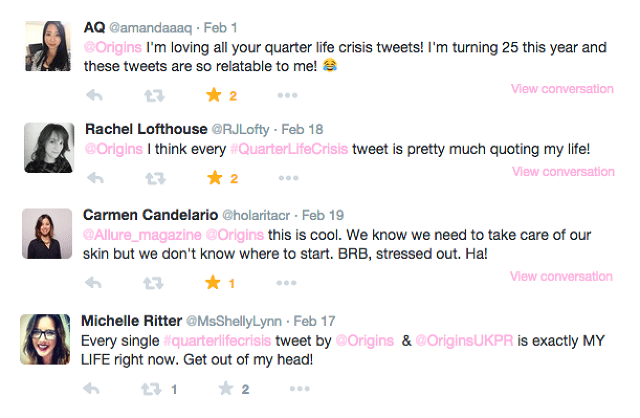
these internal meetings additionally made it clear that one of the best ways to engage with millennials used to be on-line, somewhat than thru print, radio, or T.V. ads. “people in our generation are expecting to interact in a one-to-one speak with brands,” Martino says. “Social media is a good way to have interaction with twentysomethings who is probably not travelling retailers, in view that they reside their lives online.” Origins launched an all-digital “quarter-existence predicament” marketing campaign, sharing news concerning the serum on social media, and through a wide network of bloggers and YouTube influencers. but Martino and her social media crew didn’t simply make a difficult sell for the serum. in addition they posted quips on social media about what it’s like to be a twentysomething: “When lifestyles will get real and you leave out school”; “When you’re making plans to go out. but you really wish to keep in, movement movies, and eat takeout”; “Marry him or smash up? perhaps shuttle the world, discover a scorching Spaniard, and continue to exist the coast of Ibiza.”

These messages began a broader conversation with buyers, spurring them to reply with their own quarter-existence difficulty tales. The Origins social media crew worked laborious to respond to each remark to make the brand really feel private and intimate. “Millennials are in search of brands that get them, beyond just what their merchandise can do,” Martino explains. “This approach was extra about creating a millennial lifestyle and a place where they are able to discuss all of the things that are going on of their lives. We were inserting ourselves into an existing dialog, rather than growing our own, which we felt would be more authentic.” Martino points out that her crew additionally took care to not alienate older consumers by running centered facebook commercials for ladies of their thirties and forties with products and posts which are a better fit for them.

Getting the appear right
As a ultimate step, Origins needed to ensure that the campaign design was completely tailor-made to the sensibilities of millennials. That’s a hard factor to pin down, due to the fact aesthetics are so subjective. however the co-developing workshops yielded one valuable piece of information: twentysomethings spend plenty of time on the net, surrounded with computer-generated fonts and pictures, so the images that stand out to them are regularly no longer digital, however hand-drawn. Millennials usually tend to notice calligraphy or illustrated images.

finally, the imagery for the Origins “quarter-lifestyles campaign” took place by serendipity. Mark Ferdman, a VP at Origins who occurs to attract in his spare time, noticed the work of Bee Stanton, a 25-12 months-old artist from Nova Scotia, on Instagram. Stanton is interested by typography, and her work continuously features superbly hand-lettered fees, surrounded with the aid of photos of issues like boats, mermaids, or flora. quickly the 2 started commenting on every others’ work, and Ferdman thought Stanton could be an excellent fit to create the seem to be of the marketing campaign. “After taking my doodles to teams of twentysomethings to peer their reactions, he offered me the entire marketing campaign,” Stanton says. “I used to be over the moon. I was absolutely beside myself.”
this is not most often how brands secure artwork for large-scale, big-funds campaigns. but this is exactly why it resonated with the millennial co-advent groups. They looked as if it would love it as a result of it felt non-public, fairly than like the work of a big company. Stanton’s work is naturalistic and now not over-concept, considering that she is unable to iterate with hand illustrations as she would with computer designs. “We’ve been submerged in the on-line world proper from the start,” Stanton tells me. “there are so many photography competing for our attention, so we’ve a finely tuned sense of when issues are completely different or genuine. Origins seems to get that about millennials.”
quick company , read Full Story
(110)

